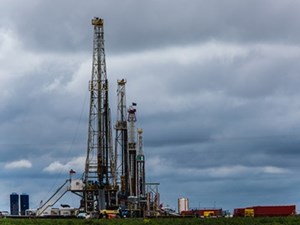Goldman draws inferences from 1990s to predict oil’s future
SINGAPORE (Bloomberg) -- The future of the oil market may resemble the past―specifically the 1990s― according to Goldman Sachs Group.
That’s when prices remained steadily in backwardation, a market structure where near-term futures are costlier than later contracts -- reflecting tight supplies in the present and ample bbl further out, analysts including Damien Courvalin wrote in an April 8 report.
The phenomenon may persist as OPEC exits its current output cuts aimed at averting a global glut, adding supply back to the market in a move that would weigh on long-dated prices, Goldman said. That will maintain backwardation and lead U.S. shale drillers to limit activity, according to the bank.
“We view this as the most compelling outcome for OPEC, and the market structure most likely to be sustainable,” the analysts wrote in the report. “But having been waiting for this shift since 2016, we are not yet ready to base case it, even though the maturing shale producer landscape should eventually help achieve it.”
Goldman also raised its second-quarter forecast for global benchmark Brent crude to $72.50/bbl from $65/bbl, and said a rally that’s taken prices over $70/bbl is reflective of a larger deficit than it predicted. OPEC’s cuts, an acceleration in global economic activity, tighter U.S. oil sanctions on producers such as Iran and an only moderate gain in shale production will continue to squeeze supplies through 2019, according to the bank.
Brent futures traded little changed at $71.11/bbl in London. West Texas Intermediate, the U.S. benchmark, was up 0.4% at $64.63/bbl in New York.
While a risk-on investor sentiment and the threat of disruptions may drive spot prices even higher, Goldman expects them to decline gradually from this summer as production from shale fields and the Organization of Petroleum Exporting Countries increases. “We therefore find more compelling opportunities for corporates and investors in time spreads, differentials and product cracks,” the analysts wrote.
Unlike last year, there is well identified global spare production capacity at the moment, the bank said. Further, new pipeline and export capacity will connect the Permian -- the cheapest and largest shale basin in America -- to the global market by this fall, according to Goldman.
This outlook supports the bank’s expectation of further backwardation. Goldman said the key to a successful implementation of OPEC’s cuts will be a shift over the coming months to a coordinated exit strategy of rising production. The “anchoring” of long-dated prices will be a key metric to assess whether the curbs have overshot, and backwardation is sustainable, it said.
“Any meaningful rally in three-year forward prices -- which so far have been anchored at $55/bbl for WTI -- would provide an opportunity for more aggressive shale growth without sacrificing returning cash to shareholders,” the analysts wrote.
Goldman also flagged opportunities for investors: Bank expects a return of volatility after a period of “surprising calmness.” Oil producers should hedge forward earnings despite higher price forecasts as this would reassure energy equity investors. Goldman sees further steepening of front-month to 3-year Brent backwardation to $12.50/bbl from $9/bbl currently; continues to recommend this trade. Tight physical markets to support shorter-dated crude time spreads, prompting them to converge higher into expiration. Trend to persist on rising refinery demand for crude from summer onward, and as units ramp-up operations ahead of stricter ship-fuel environmental quality standards next year.



